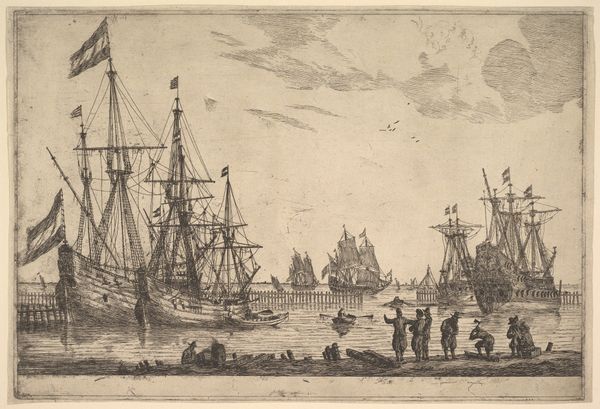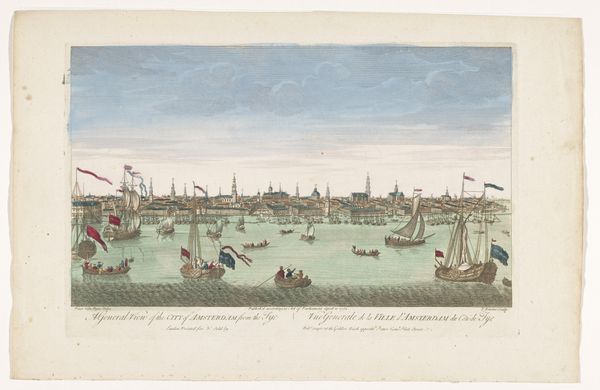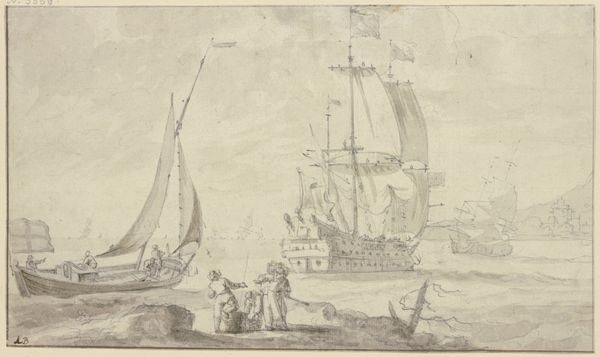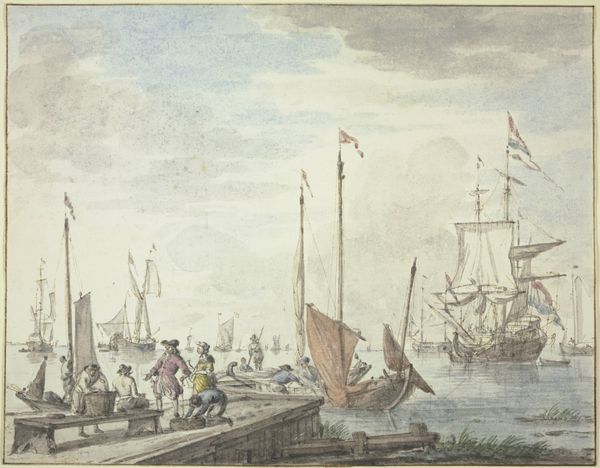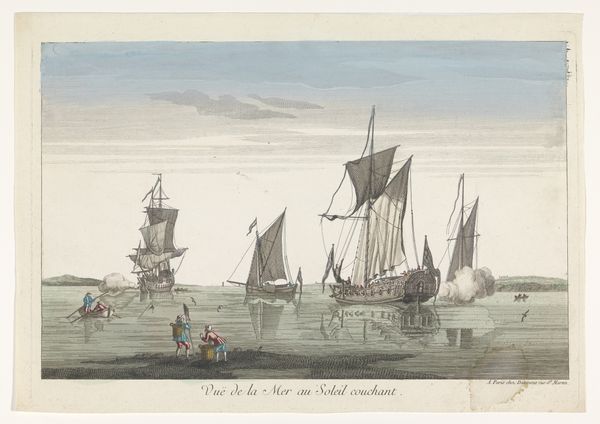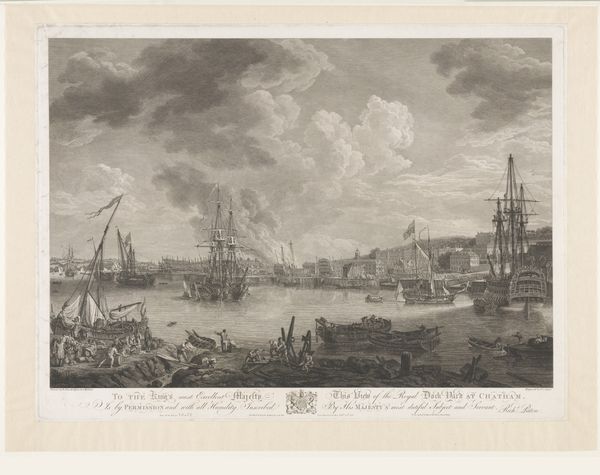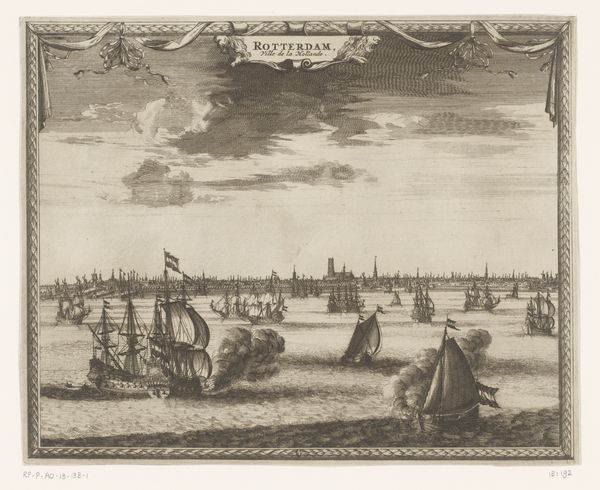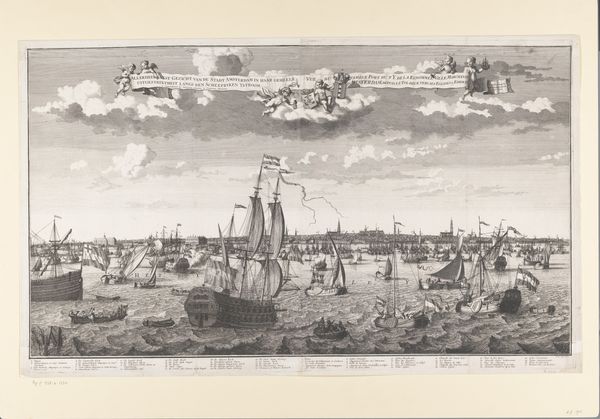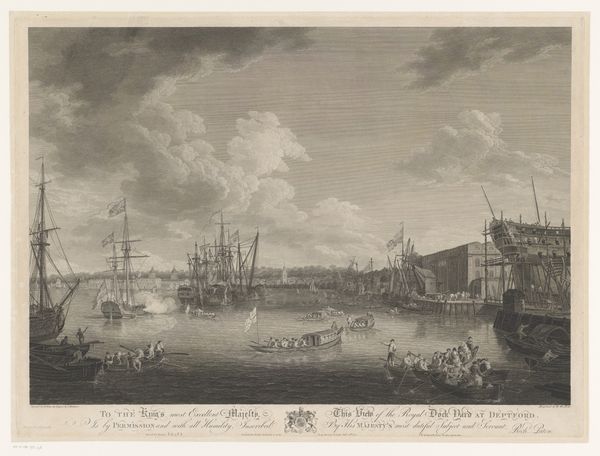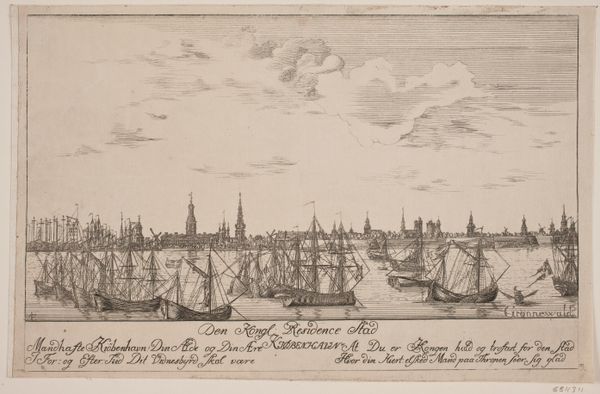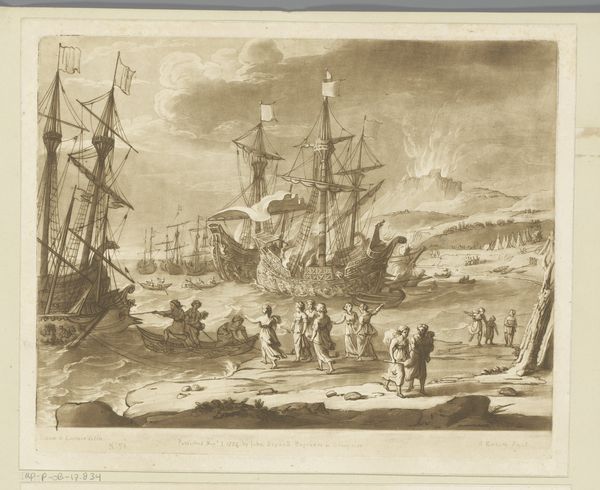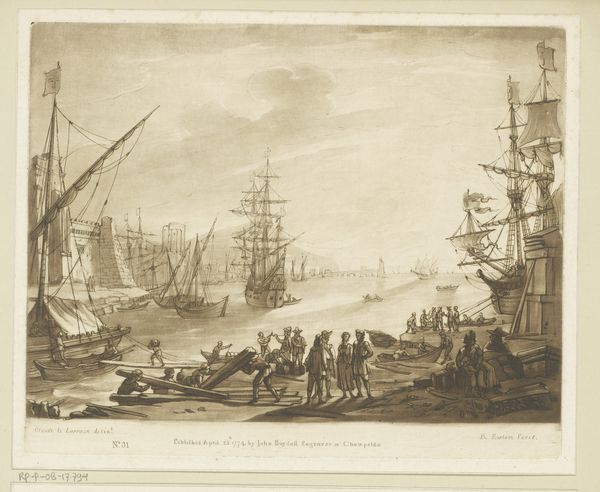
print, engraving
# print
#
landscape
#
coloured pencil
#
cityscape
#
engraving
#
realism
Dimensions: height 287 mm, width 416 mm
Copyright: Rijks Museum: Open Domain
Curator: Here we have a rather fascinating print, "Gezicht op de haven te Calais," or "View of the Port of Calais." It is believed to have been created sometime between 1745 and 1775 by Jean-François Daumont, rendered as an engraving. It gives a vivid representation of maritime activity at the port, now held in the Rijksmuseum's collection. Editor: The immediate thing that strikes me is the stillness despite the scene being the port of a bustling city. It’s so precise, and while you can almost feel the breeze, the colours give it this muted, reflective mood, if that makes sense. It invites consideration. Curator: It absolutely does. This kind of cityscape, especially one centered on trade, was often commissioned to project prosperity and stability. Calais was an important strategic and commercial hub; prints like this circulated amongst merchants, nobility, and officials. Note the impressive architecture alongside the working elements. Editor: Yes, it's clear that this print would be consumed as both a document and form of visual propaganda. It would reflect both national pride and the economic role played by port cities such as Calais in larger political struggles. Those figures gesturing on the quay--what's their story? Curator: They may well be engaged in the rituals of greeting or bidding farewell, adding to the drama of the image, of movement, and perhaps underscoring class dynamics—who waits and who commands a vessel. Their presence suggests human stories unfolding. Consider the layering, how the water acts as a sort of barrier, reflecting all social exchange back to the people themselves. Editor: So in looking at a historical artefact like this, it's interesting how its themes resonate in contemporary society; discussions of borders, national identity, global trade... It is important to remember that our reading is of course inflected by the circumstances of modern life. Curator: Indeed. Looking back gives us clarity when thinking forward. This print, as both a document of record and object of artistic expression, is a fantastic case study in the layered historical meanings inherent in seemingly simple cityscapes.
Comments
No comments
Be the first to comment and join the conversation on the ultimate creative platform.
